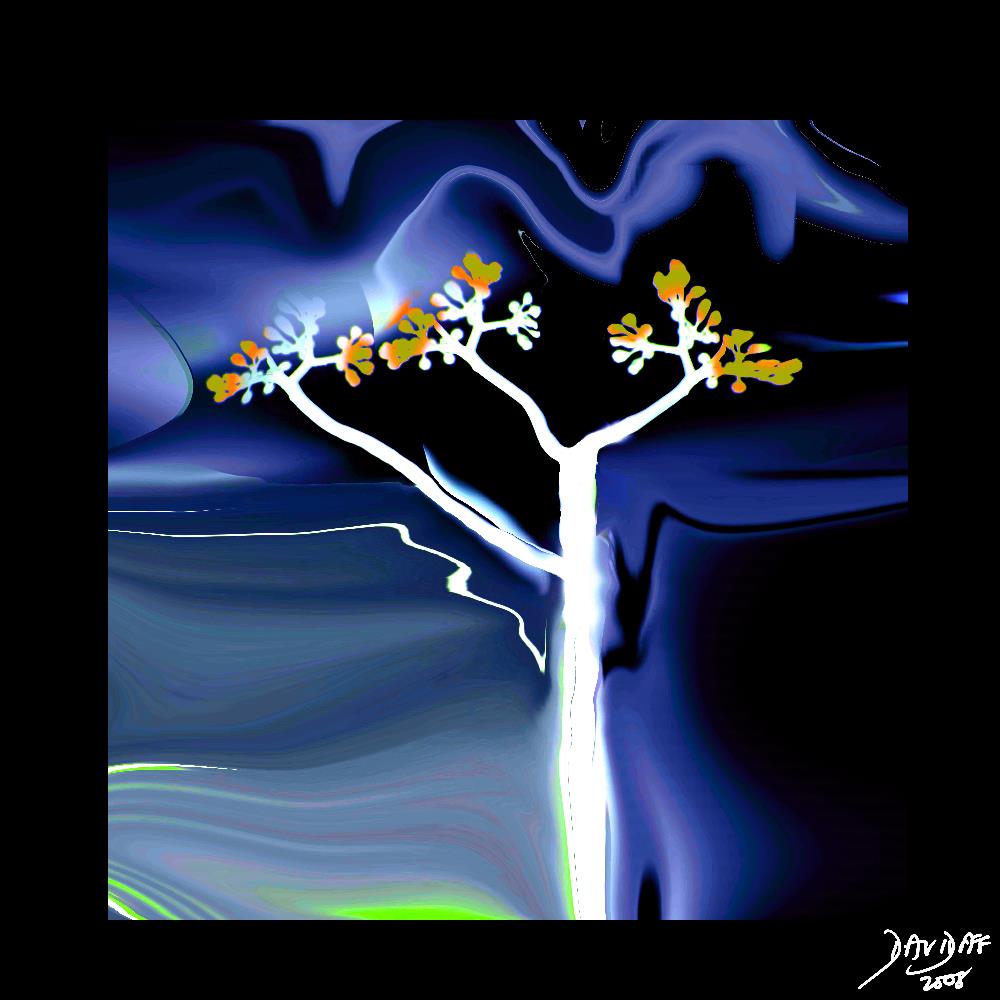| Tree in Bud
The Common Vein Copyright 2008
Ashley Davidoff MD
is a radiological sign that characterises abnormal filling and stretching of the bronchioles best seen in the periphery of the lung AND and localises the disease to the centrilobular bronchioles. There is lack of tapering at the tip of their branches giving the appearnce of knobby/bulbous branches and hence the “budding” reference . The bronchioles are 2-3 mm structures that are not usually resolved by CT scanning since the walls are to thin to be differentiated. (Zompatori) When they are filled with fluid, mucus, pus, granulomas or inflammatory cells they are visualised as as branching structures. They may cause subsegmental obstruction of the distal airways visible on expiratory sections.
They may appearas branching and budding or just as a focal clustered collection of buds in the centrilobular region
CAUSES
Most commonly infectious and associated with acute bronchitis, pneumonia and bronchiectasis. Also seen in active cases of TB and atypical TB and Asian panbronchiolitis.
The TIB pattern on CT scan is mostly associated with pulmonary infections that commonly involve the large airways. This pattern was present in 17.6% of cases with acute bronchitis or pneumonia and 25.6% of cases with bronchiectasis.(Aquino) Also seen in patients with cystic fibrosis , allergic bronchopulmonary aspergillosis bronchoalveolar carcinoma Rarely in sarcoidosis and collagen vascular diseases.
Not seen in patients with emphysema, respiratory bronchiolitis, bronchiolitis obliteransBOOP, hypersensitivity pneumonitis.(Aquino)
UCSF
AJR AJR
UCSF
Mevis
References
- Akira M, Kitatani F, Lee YS, et al. Diffuse panbronchiolitis: evaluation with high-resolution CT. Radiology 1988; 168:433-438.[Abstract]
- Aquino SL, Gamsu G, Webb WR, Kee ST. Tree–in–bud pattern: frequency and significance on thin section CT. J Comput Assist Tomogr 1996; 20:594-599.[CrossRef][Medline]
- Gruden JF, Webb WR. Identification and evaluation of centrilobular opacities on high-resolution CT. Semin Ultrasound CT MR 1995; 16:435-449.[CrossRef][Medline]
- Itoh H, Tokunaga S, Asamoto H, et al. Radiologic-pathologic correlations of small lung nodules with special reference to peribronchiolar nodules. AJR Am J Roentgenol 1978; 130:223-231.[Abstract]
- Collins J, Blankenbaker D, Stern EJ. CT patterns of bronchiolar disease: what is “tree–in–bud“?. AJR Am J Roentgenol 1998; 171:365-370.[Free Full Text]
- Im JG, Itoh H, Shim YS, et al. Pulmonary tuberculosis: CT findings—early active disease and sequential change with antituberculous therapy. Radiology 1993; 186:653-660.[Abstract]
- Fitzgerald JE, King TE, Jr, Lynch DA, Tuder RM, Schwarz MI. Diffuse panbronchiolitis in the United States. Am J Respir Crit Care Med 1996; 154:497-503.[Abstract]
- Muller NL, Miller RR. Diseases of the bronchioles: CT and histopathologic findings. Radiology 1995; 196:3-12.[Medline]
- Hatipoglu ON, Osma E, Manisali M, et al. High resolution computed tomographic findings in pulmonary tuberculosis. Thorax 1996; 51:397-402.[Abstract]
- Gruden JF, Webb WR, Warnock M. Centrilobular opacities in the lung on high-resolution CT: diagnostic considerations and pathologic correlation. AJR Am J Roentgenol 1994; 162:569-574.[Abstract/Free Full Text]
- Hartman TE, Swensen SJ, Williams DE. Mycobacterium avium-intracellulare complex: evaluation with CT. Radiology 1993; 187:23-26.[Abstract]
- Moore EH. Atypical mycobacterial infection in the lung: CT appearance. Radiology 1993; 187:777-782.[Abstract]
- Hwang JH, Kim TS, Han J, Lee KS. Primary lymphoma of the lung simulating bronchiolitis: radiologic findings. AJR Am J Roentgenol 1998; 170:220-221.[Medline]
|
